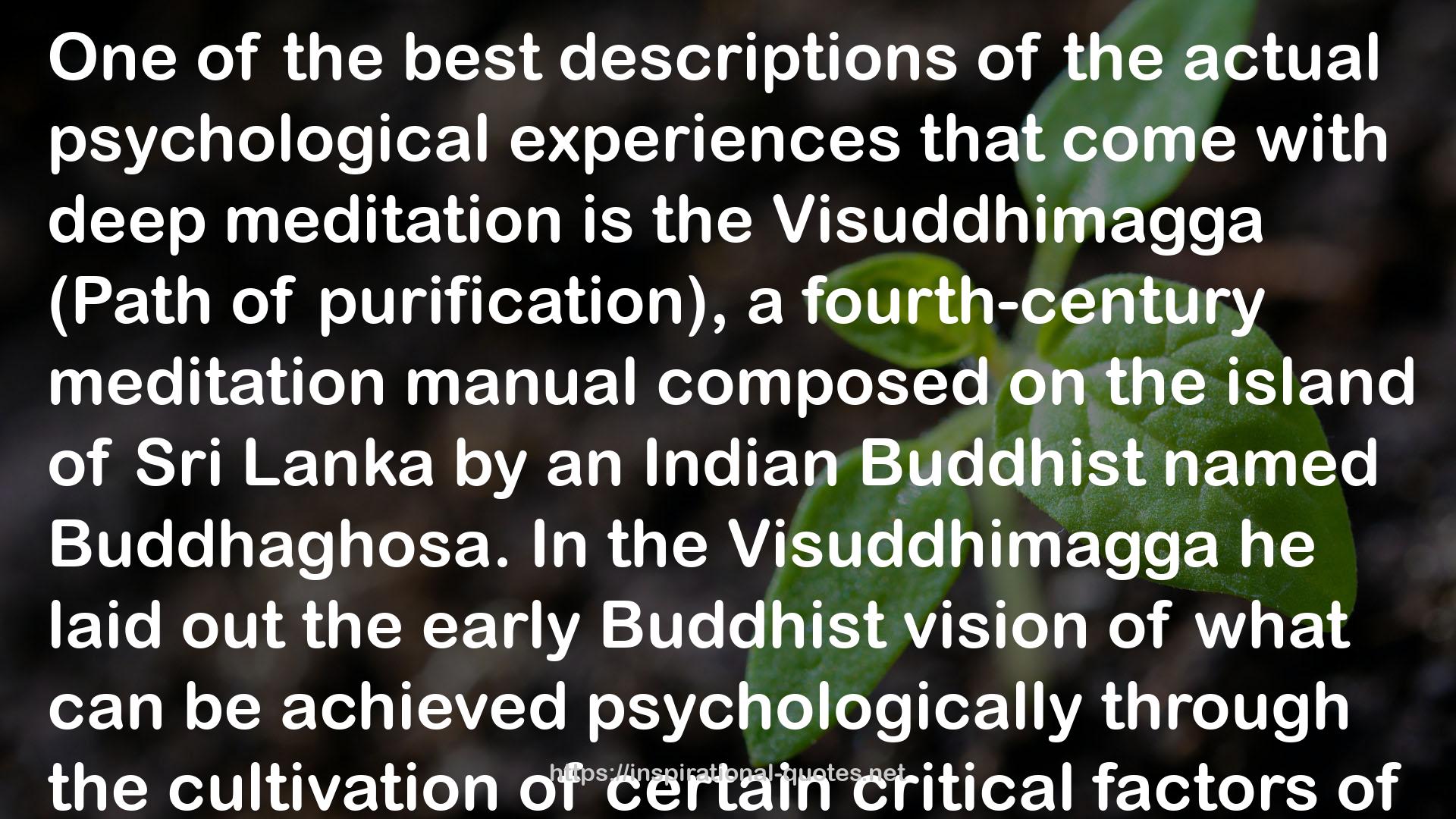" One of the best descriptions of the actual psychological experiences that come with deep meditation is the Visuddhimagga (Path of purification), a fourth-century meditation manual composed on the island of Sri Lanka by an Indian Buddhist named Buddhaghosa. In the Visuddhimagga he laid out the early Buddhist vision of what can be achieved psychologically through the cultivation of certain critical factors of mind that are developed through meditation practice. As a cross section of the meditative mind, this manual is unparalleled. Through the relentless development of both concentration (the ability to rest the mind in a single object of awareness) and mindfulness (the ability to shift attention to a succession of objects of awareness), the meditator eventually enters into states that are variously described as ones of either terror or delight. These are states that do not often unfold in psychotherapy: they may be glimpsed or remembered, but they do not come forward inexorably, as they do in meditation practice. Their emergence is predicated on the development of certain ego functions beyond the normal operating range of everyday life. Listen, for example, to the classic descriptions of some of these states. The experiences of delight, for instance, are characterized by varying degrees of rapture or happiness, of which there are said to be five grades: Minor happiness is only able to raise the hairs on the body. Momentary happiness is like flashes of lightning at different moments. Showering happiness breaks over the body again and again like waves on the seashore. Uplifting happiness can be powerful enough to levitate the body and make it spring up in the air. . . . But when pervading (rapturous) happiness arises, the whole body is completely pervaded, like a filled bladder, like a rock cavern invaded by a huge inundation.1 "
― Mark Epstein , Thoughts Without A Thinker: Psychotherapy From A Buddhist Perspective
